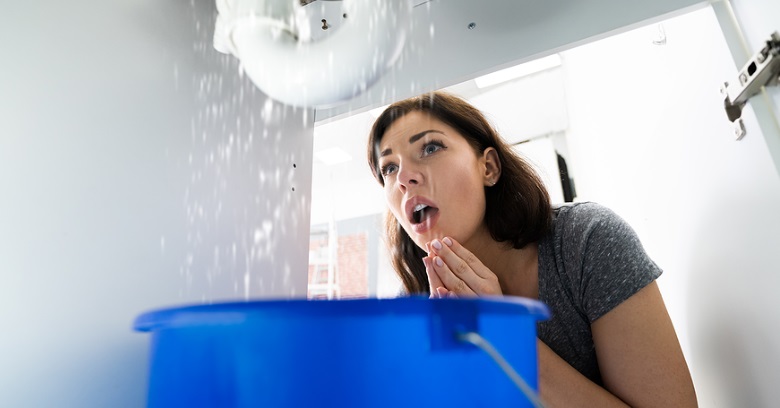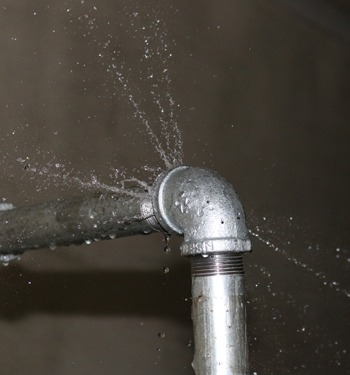Spotting and Efficiently Fixing a Burst Pipe: A Practical Guide
Spotting and Efficiently Fixing a Burst Pipe: A Practical Guide
Blog Article
The content below about What to Know Before Installing a Dishwasher is especially intriguing. Read on and make your own results.

A burst pipeline is a major emergency; you can just stand as you enjoy water you pay dearly to rejoin with the earth. In even worse cases, you observe a pool on your kitchen area floor, which is an excellent trip danger, particularly if you have children around. If the pipe that ruptured was in your wall surfaces, bad news: you may require to paint that entire section.
Just how can a disaster like a ruptured pipe be protected against as well as managed? Well, by listening to your expert emergency plumbers as well as adhering to these guidelines.
Exactly how do I recognize when my pipes have ruptured?
Rising and fall water pressures
Pipelines do not just burst in a day. You may have observed that your cooking area tap or shower doesn't run quickly when you turn the faucet. It might pause for a few secs and afterwards blast you with more force than typical.
In various other circumstances, the water may seem typical in the beginning, then drop in pressure after a few secs.
Damp wall surfaces and water stains
Prior to a pipeline ruptureds, it will certainly leak, many times. If this consistent dripping goes undetected, the leakage might graduate into a broad laceration in your pipeline. One very easy means to prevent this emergency is to keep an eye out for wet walls advertisement water stains. These water spots will certainly lead you right to the leakage.
Puddles under pipelines and sinks
When a pipe ruptureds, the discharge creates a puddle. It may show up that the pool is expanding in size, and regardless of the amount of times you wipe the pool, in a few minutes, there's one more one waiting to be cleansed. Often, you may not be able to trace the puddle to any type of noticeable pipelines. This is an indicator to call a professional plumber.
Untraceable leaking sounds
Pipeline ruptureds can take place in one of the most undesirable areas, like within concrete, inside wall surfaces, or under sinks. When the house goes silent, you may be able to hear an irritatingly consistent trickling noise. Even after you have actually examined your shower head and cooking area tap, the leaking might proceed.
Beloved reader, the leaking might be originating from a pipeline inside your walls. There isn't much you can do concerning that, except tell a professional plumber.
Shut down the Water
When water ices up, it expands in volume by about 9 percent. As well as it broadens with remarkable pressure: The stress inside pipes may go from 40 extra pounds per square inch to 40,000 psi! No pipeline can hold that much stress, so it breaks open. The break may happen where the ice types, however more often, it takes place where water pressure locates a vulnerable point in the pipe. That might be inches or even feet from the frozen location. Discover the water shutoff valve and turn off the water to prevent even more damage. You could likewise require to turn off the electricity as well, depending upon where the leaks happens as well as how big it is.
Infected water
Many people presume a ruptured pipeline is a one-way electrical outlet. Quite the contrary. As water drains of the hole or tear in your plumbing system, pollutants find their method.
Your water may be polluted from the resource, so if you can, inspect if your water storage tank has any issues. However, if your alcohol consumption water is supplied and also cleansed by the local government, you should call your plumber immediately if you see or scent anything funny in your water.
What do I do when I find a burst pipeline?
Your water meter will continue to run also while your water wastes. To reduce your losses, find the primary controls and turn the supply off. The water pipe are an above-ground structure at the edge of your residential or commercial property.
How to Fix & Detect a Leaking Pipe
How Do I Know if a Pipe is Leaking?
Leak detection tests can help you determine if your pipe has a leak. Even if you don’t see an apparent leak, you should still conduct leak detection tests regularly to save water and money—and prevent major damage to your home.
Water meter. It can be helpful to figure out what your usual water meter usage numbers are and then monitor them regularly. To monitor your meter, first, turn off all water faucets in your home. Check the meter and write down the numbers. In a few hours, check the meter again. If the numbers have changed, you have a leak. Water gauge. Use a water gauge to test your water pressure. Your showerhead should produce a certain amount of water pressure based on its model and design. If the pressure is lower than it is supposed to be for that specific showerhead, your home likely has a leak. Puddles. Look inside your bathroom, laundry, and kitchen sink cabinets. Puddles around the cabinets or around toilets, tubs, showers, and washing machines indicate the presence of a leaking pipe. You may also notice loose tiles, peeling or flaking paint, or mold caused by water accumulation. Napkin test. Even if you don’t see any puddles, you may still have a leak. You can test for water leaks in the bathroom, laundry, and kitchen by wiping below-sink connections with a napkin, paper towel, or piece of toilet paper. If it becomes damp, you probably have a leaking pipe under the sink. Discolored walls. Walls that are discolored—usually with brown or yellow stains—or bulging might mean that they have been impacted by water damage caused by a leaking pipe. Smell. A leaky pipe will create sitting water, and over time, that water may develop a musty smell. If your home smells musty, but you can’t locate the source, it may be due to a leak. Steps for Fixing a Leaking Pipe
A leaky drain can be remedied by tightening the pipe base, replacing the drain seal, caulking the rim, and tightening the pipe nut. Similarly, a leaking toilet pipe can be treated by tightening the packing nut. You may also need to replace the valve. A leaky faucet may just need tightening or replacement of the washers. If that doesn’t work, consider replacing your faucet. If your pipe has a hole in it, you may want to use a pipe leak sealer or pipe leak tape. This quick fix for water pipe leaks can also temporarily fix a copper pipe leak. https://www.ahs.com/home-matters/quick-tips/how-to-tell-if-pipes-are-leaking/

I ran across that content about What to Know Before Installing a Dishwasher while doing a search on the search engines. Liked our blog? Please share it. Help others locate it. Thank-you for taking the time to read it.
Go Deal Now Report this page